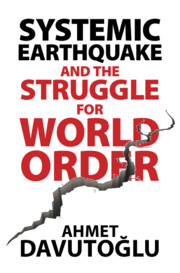Book contents
- Systemic Earthquake and the Struggle for World Order
- Systemic Earthquake and the Struggle for World Order
- Copyright page
- Dedication
- Contents
- Foreword
- Acknowledgments
- Abbreviations
- Introduction: Conceptual and Methodological Framework
- Part I Systemic Earthquake: Analysis and Consequences of World (Dis)Order
- 1 Traditional, Modern, and Global “World Orders”
- 2 The Roots of World (Dis)Order: Geopolitical, Security, Economic, and Structural Earthquakes in the Post-Cold War Era
- 3 Systemic Earthquake: Fragile National, Regional, and Global Structures
- 4 Systemic Earthquake: Global Powers and the “Multiple Balances of Power” System
- Part II A New Vision: Inclusive Governance
- Notes
- Bibliography
- Index
1 - Traditional, Modern, and Global “World Orders”
A Historical Perspective
from Part I - Systemic Earthquake: Analysis and Consequences of World (Dis)Order
Published online by Cambridge University Press: 09 January 2020
- Systemic Earthquake and the Struggle for World Order
- Systemic Earthquake and the Struggle for World Order
- Copyright page
- Dedication
- Contents
- Foreword
- Acknowledgments
- Abbreviations
- Introduction: Conceptual and Methodological Framework
- Part I Systemic Earthquake: Analysis and Consequences of World (Dis)Order
- 1 Traditional, Modern, and Global “World Orders”
- 2 The Roots of World (Dis)Order: Geopolitical, Security, Economic, and Structural Earthquakes in the Post-Cold War Era
- 3 Systemic Earthquake: Fragile National, Regional, and Global Structures
- 4 Systemic Earthquake: Global Powers and the “Multiple Balances of Power” System
- Part II A New Vision: Inclusive Governance
- Notes
- Bibliography
- Index
Summary
The idea of creating a sustainable social order is as old as the history of mankind and has come to be perceived by all civilizations as their ultimate goal. These quests to establish order have sometimes remained at a city-state level, while at other times they have transcended geographical limits to transform into comprehensive and inclusive political orders. When it encompassed a number of civilizational basins, this comprehensive nature ultimately embraced the assertion of establishing a world order.
While their basic creeds, ideologies and tools may differ, their search for world order can be classified in terms of method and type of approach into three eras; antiquity/traditional, modernity and globality. An understanding of these eras’ intrinsically shared features as well as the elements of continuity between them is a prerequisite to being able to shed light on the problematics we face today with respect to the world order.
From this perspective in the first chapter of the book a background to the historical course of world order is provided under the headings of traditional, modern and global world orders.
Keywords
- Type
- Chapter
- Information
- Systemic Earthquake and the Struggle for World OrderExclusive Populism versus Inclusive Democracy, pp. 17 - 45Publisher: Cambridge University PressPrint publication year: 2020
- 1
- Cited by



